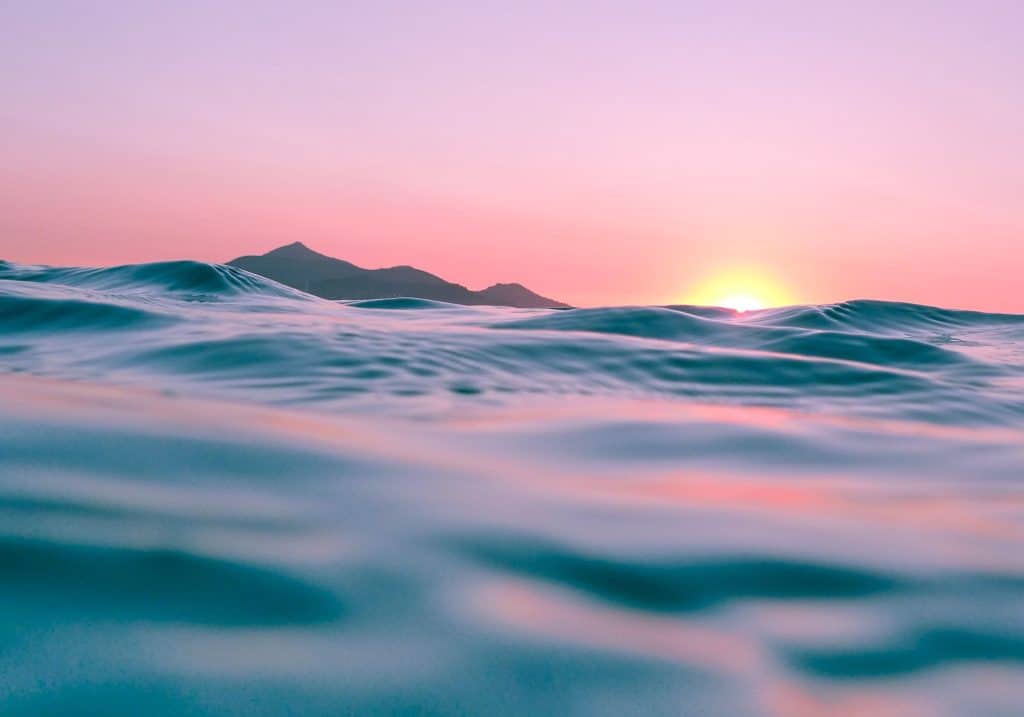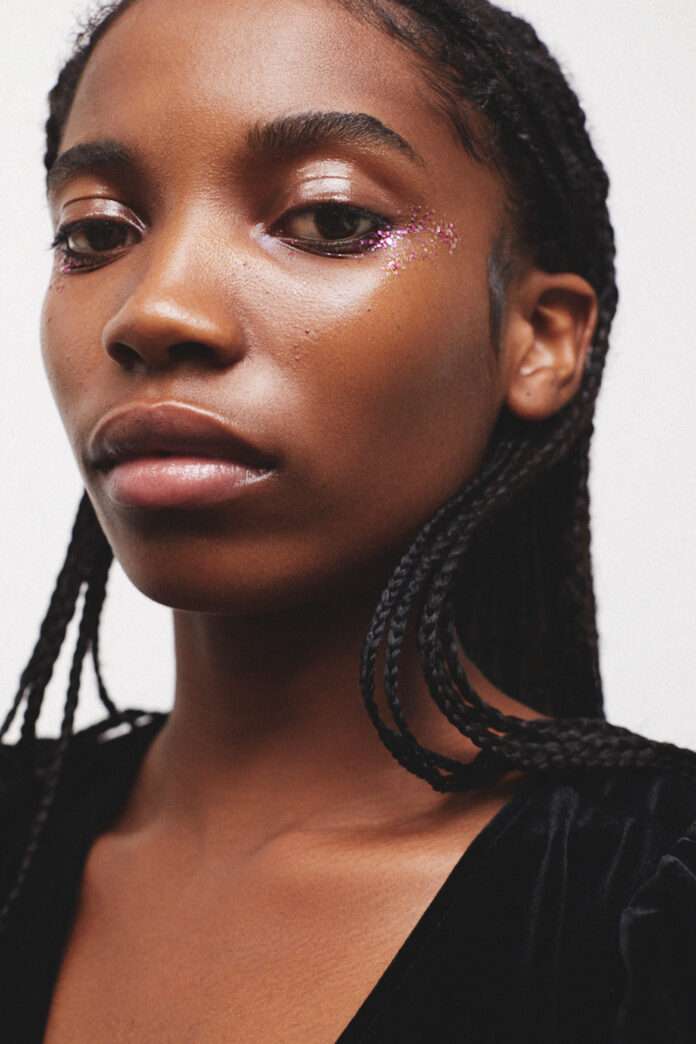On the heels of earning B Corp status, Danish luxury label Ganni takes its sustainability commitment into the beauty sector for the first time with the launch of plant-based biodegradable litter in partnership with Submission Beauty.
Ganni has not been shy about its commitment to sustainability. In 2020, it launched its Responsibility Game Plan and has been actively working on it ever since with 100 percent traceability across its supply chain Stages 1-4.
The Danish label recently earned the highest B Corp score for a luxury label and has released several innovative textiles in the last several months, including a tracksuit made from banana agricultural waste, and a t-shirt made from upcycled cotton waste. Its most recent collection sees 87 percent of production volume coming from responsible styles—containing at least 50 percent sustainable textiles such as low-impact, organic, or certified recycled materials.

The Danish label is now venturing into the world of beauty, with a limited glitter capsule in three shades, pink, gold, and silver in collaboration with the zero-waste beauty brand, Submission Beauty.
Ganni worked with Submission Beauty on its recent SS22 and FW22 shows. The companies say the collaboration was born out of a shared love of bold colors, joyful expressions, and a deep commitment to responsibility.
“Submission’s universe is so full of expression and color just like Ganni’s and I couldn’t be happier that our first beauty collaboration is with them. We came up with these super fun colors that are all about giving people a way to express themselves and go a little crazy. We share the same vision for our industries. Working with old friends feels amazing and I can’t wait to introduce the glitter to our community, Ditte Reffstrup, Ganni’s Creative Director said in a statement.
“We’re thrilled to be the first-ever brand to collaborate with Ganni on a beauty launch, and even more proud that together, Submission and Ganni are empowering the growing shift towards sustainability and responsible luxury in beauty and fashion,” Zenia Jaeger, Founder, Submission Beauty, said in a statement. “Our collaboration with Ganni turns wasteful, toxic traditional glitter on its head, providing a plant-based, biodegradable alternative to microplastic glitter that offers all the flash and fun of the original, with none of the harm to the human body and our ecosystem.”

The limited-edition Ganni glitter is 100 percent plastic-free. It’s also free from antimony and aluminum, made instead of biodegradable eucalyptus tree cellulose. According to Jaeger, this glitter is 40 percent softer on the skin than conventional glitter makeup.
Glitter’s big impact on the environment
Glitter’s tiny sparkles may seem harmless, but they are a big problem for the planet. Conventional glitter is typically made from polyethylene terephthalate (PET) plastic, and because of its size, falls into the microplastic category, which is a leading cause of ocean pollution.
Research published in 2019 in the journal Marine Pollution Bulletin found glitter may be one of the more significant sources of microplastic, threatening marine life and other animals. A blog post from the NOAA Marine Debris Program also cites glitter as a leading contributor to marine debris.

Microplastics are frequently consumed by marine animals where they can lodge into their digestive tracts causing a number of issues, including premature death. Laysan albatrosses are particularly vulnerable to microplastics because of the way they catch fish by skimming the surface of the water with their beaks.
Baleen whales are also at risk. According to the Plastic Soup Foundation, every day baleen whales ingest about three million pieces of microplastics because of their feeding style. They open their mouths wide to bring in large amounts of seawater that they then press out so that small fish and zooplankton become caught in the baleen. This leaves them vulnerable to microplastics trapped in their baleen as well.
Microplastics are also speeding up climate change. The oceans, namely the phytoplankton and zooplankton, play a significant role in carbon sequestration. But plastic accumulation makes their processes less effective, which changes the pH levels of ocean waters and impairs the ability to sequester carbon.
Related stories:
All products featured on Ethos have been independently selected by our editorial team. When you buy something through our links, Ethos may earn an affiliate commission.


